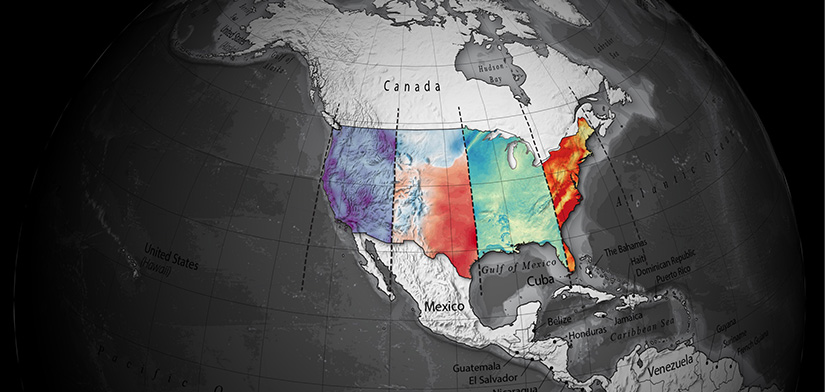Sup3rCC: Super-Resolution for Renewable Energy Resource Data With Climate Change Impacts
Developed by NREL, Sup3rCC includes high-resolution wind, solar, temperature, humidity, and pressure data that can be used to study the impacts of climate change on energy systems.
Sup3rCC is a collection of 4-km hourly wind, solar, temperature, humidity, and pressure fields for the contiguous United States under climate change scenarios. The data is downscaled Global Climate Model data and includes years for both current and future climates.
Historical high-resolution meteorological datasets are invaluable for resource assessment and power system modeling, but they lack information about future impacts from climate change. NREL developed Sup3rCC to provide energy system researchers, planners, and operators with the detailed high-resolution data needed to understand how climate change could impact wind and solar generation, electricity demand, and other weather-dependent energy variables.
Sup3rCC increases the spatiotemporal resolution of global climate models in a way that is physically realistic across space and time, computationally efficient, fully integrated into energy analysis software, and provides the output variables required to model renewable energy generation and demand. The high-resolution of the data in space and time provide a more realistic quantification of variable renewable energy generation than can be modeled based on low-resolution global climate model data, and the synchronous hourly temperature and humidity data can be used to develop corresponding energy demand timeseries.
How the Data Is Generated
Sup3rCC is a collection of open-source models and software that use a generative machine learning approach called Super-Resolution for Renewable Resource Data (sup3r) to produce synthetic high-resolution wind and solar spatiotemporal data from coarse low-resolution inputs.
Through this approach, Sup3rCC learns realistic spatial and temporal attributes of meteorological data by studying NREL's historical high-resolution data sets, including the National Solar Radiation Database and the Wind Integration National Dataset Toolkit. The model then injects physically realistic small-scale information that it learned from the datasets into the coarse data from global climate models and generates highly detailed temperature, humidity, windspeed, and solar irradiance data.
Sup3rCC outputs can then be used to study future renewable energy power generation, changes in energy demand, and impacts to power system operations. The initial Sup3rCC data set includes data from 2015 to 2059 for the contiguous United States based on two different global climate models. Additional datasets will be released in the coming years.
Please see the Sup3rCC data listing on the Open Energy Data Initiative and the associated publication for guidance on how to use this data. Notably, Sup3rCC neither represents historical weather events nor reduces uncertainty in the wide range of climate change projections.

Access the Sup3rCC Data
Sup3rCC data is publicly available at no cost through the Open Energy Data Initiative and includes links to:
Sup3rCC data registry hosted on Amazon Web Services
Sup3rCC data and model usage examples
Sup3r software GitHub repository.
Future wind, solar, and temperature data output from a traditional global climate model (left) versus output from Sup3rCC (right)—showing the stark contrast in resolution. Graphic by Grant Buster, NREL
Publications
High-Resolution Meteorology With Climate Change Impacts From Global Climate Model Data Using Generative Machine Learning, Nature Energy (2024)
Contact
Grant Buster
Grant.buster@nrel.govShare
